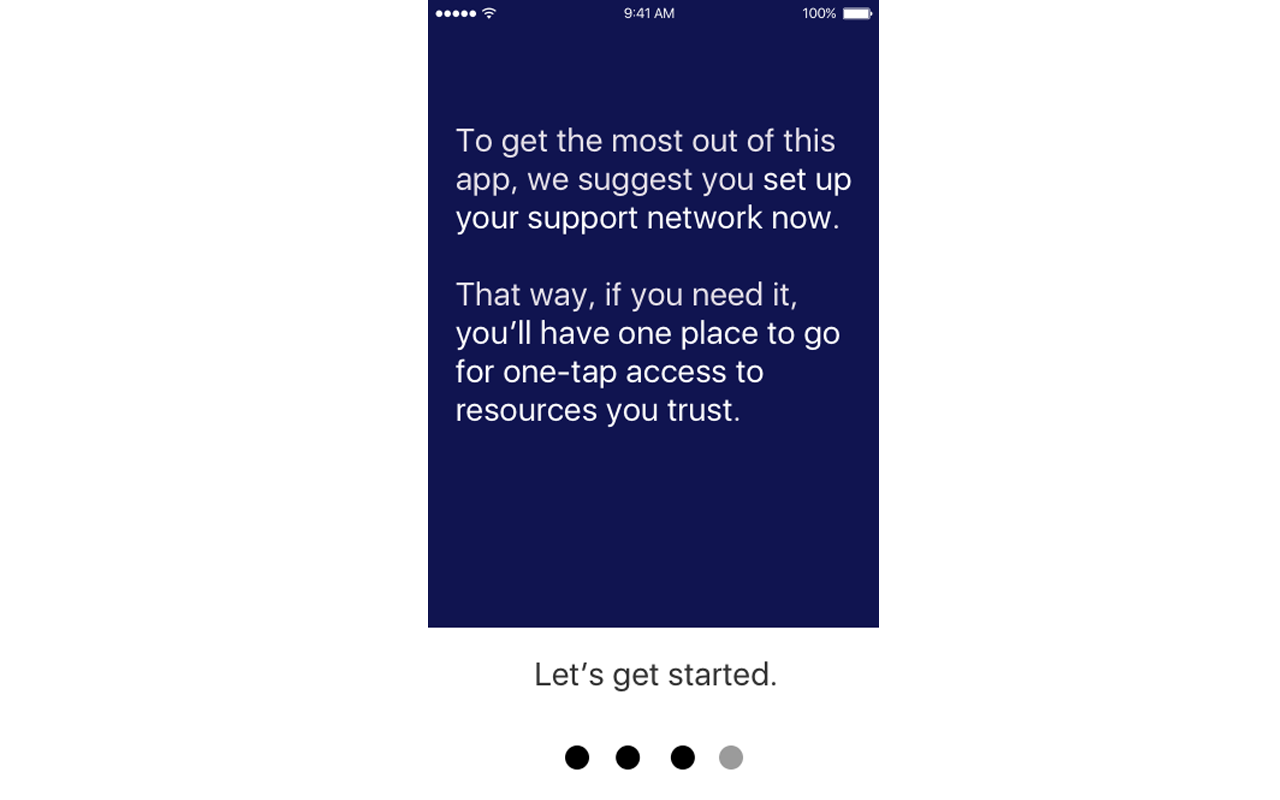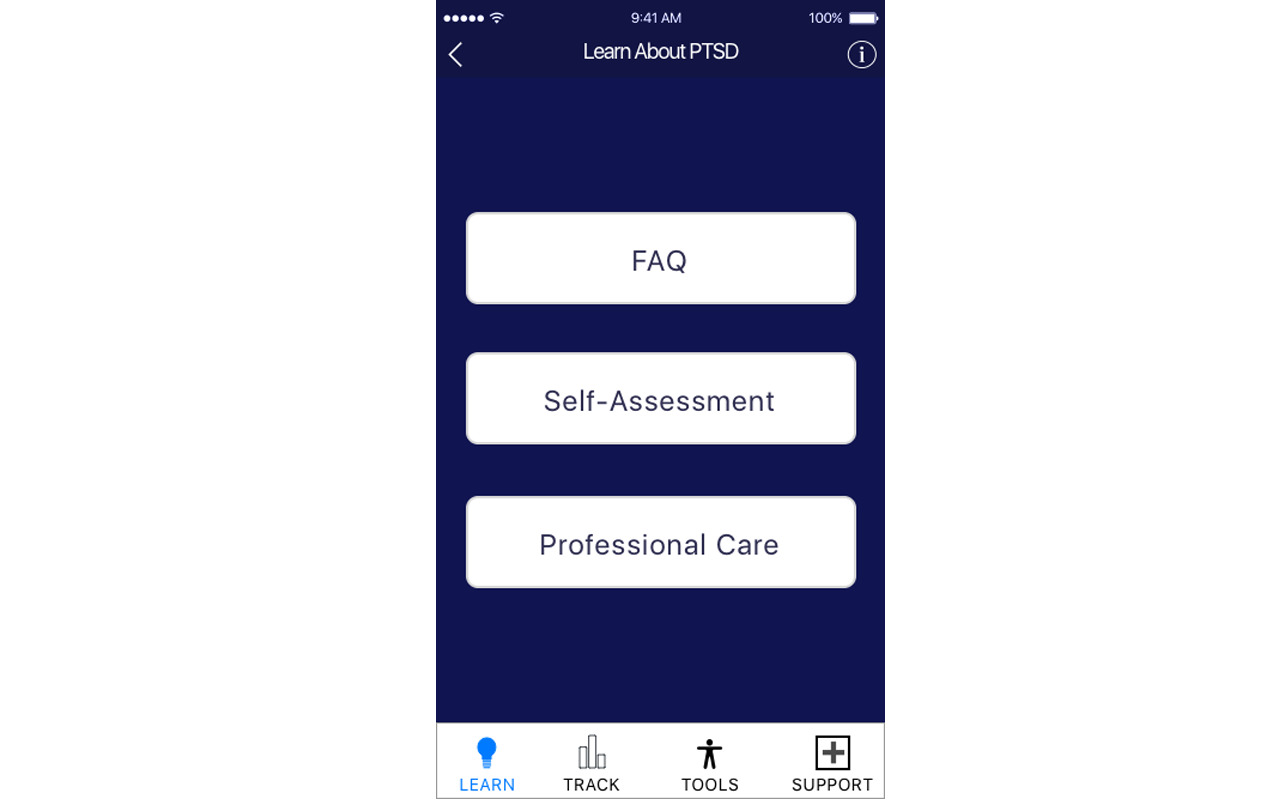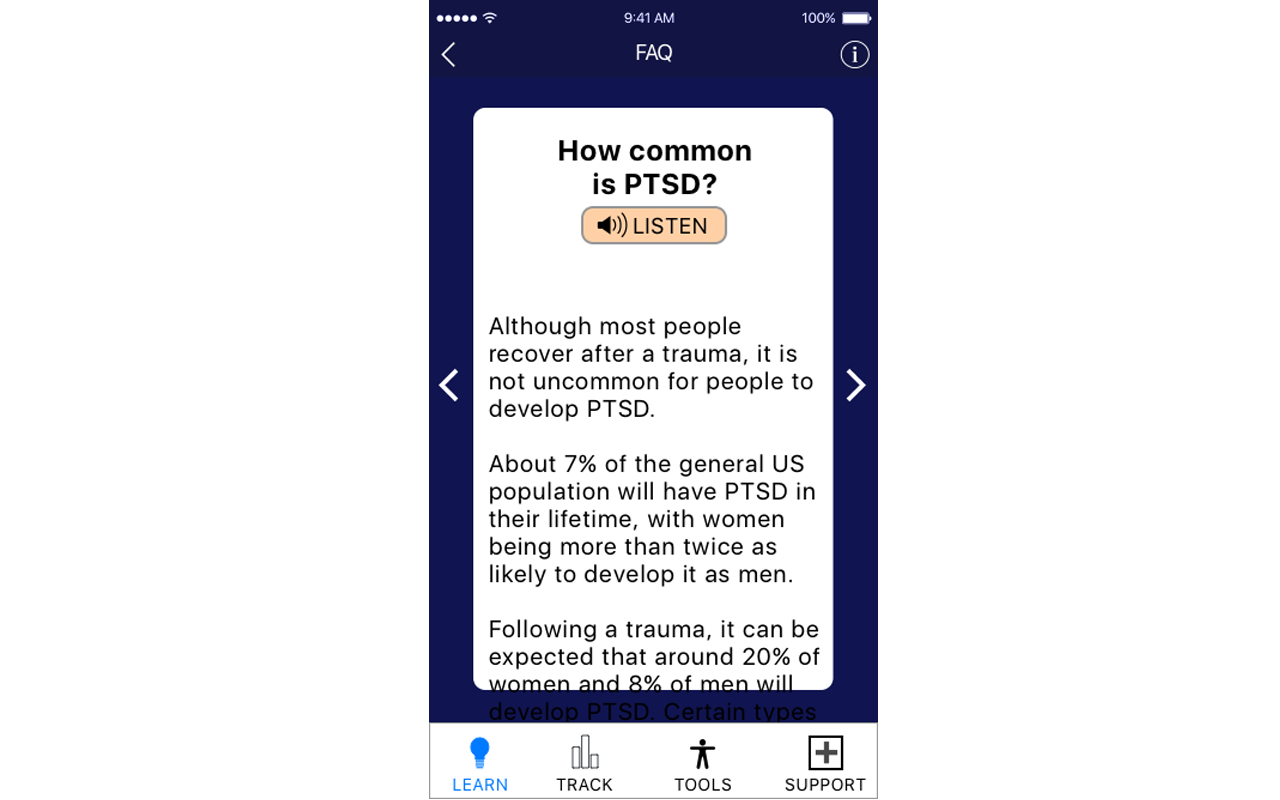



Overview
Skills: Interaction Design, Research, UX/UI
Team: 3 Designers
My Role: I was involved in research, testing, and prototyping. But I focused on being the main point of contact with the client, overseeing and giving the final approval of each stage of the design process, and making changes where needed.
Challenge: Veteran Affairs has a mobile app that helps people learn and cope with post-traumatic stress disorder (PTSD). The PTSD Coach app has too much information and is difficult to navigate.
Solution: Make the app easier to use.
End Product:
An app that:
Makes it easier to consume by using images and visual hierarchy.
Makes it easier to accomplish tasks for 3 different types of users.



















Before & After
“It was truly a pleasure working with the GA design students. They took an extremely thoughtful approach to a sensitive subject matter and we were incredibly impressed with the final product. They really took the time to listen to our concerns, conduct important user experience research, and were very receptive to our feedback. I would highly recommend their work.”
The Design Process
Company Research: By researching Veteran Affairs and the PTSD Coach app, we learned what their goals were and what they did. We studied what PTSD was and how it affected sufferers to give us a foundation of the disorder and of people's experiences. We also had to consider a few significant limitations.
App Constraints:
No server possible (app cannot store information or pull data from other sources).
Follows Section 508 Standards for accessibility (have a high color contrast, sound options, hierarchy, focus, appropriate size and space, easy to understand, low physical effort, etc).
Competitive/Comparative Analysis: We downloaded similar apps and looked at their reviews to learn what's working and not working so we can leverage that information into our design. We also discovered that the PTSD Coach app is the #1 app for PTSD sufferers, which made it crucial that we create the best possible design.
User Research: We created a survey, 3 personas, and conducted 10 interviews with veterans and non-veterans with PTSD. We asked 5 follow-up questions to responders to learn more about their experiences beyond what a survey could tell us.
Key insights were:
PTSD episodes are either triggered or occur sporadically, with ranges from mild to severe.
People usually deal with it by getting away from their situation physically and/or mentally.
Many people are not receiving clinical treatment.
Challenges: It was difficult to find people with PTSD. We used the PTSD reddit forum for our survey and utilized our connections to find veterans with PTSD. Some veterans were uncomfortable sharing their experiences so we had to be extra mindful about our approach to such a sensitive topic.
Personas: The insights led us to develop 3 personas:
A veteran who has severe PTSD and wants to manage those episodes when it happens suddenly.
A veteran who has mild PTSD and wants to manage those symptoms regularly.
A non-veteran who experienced trauma and wants to learn more about PTSD.
Our personas helped us focus and address three different types of goals.
Feature Prioritization: We wrote down all our ideas and prioritized them based on level of importance. Main findings were that the app should focus on education, management of symptoms, and urgency care.
Sketching: Sketching allowed us to create different versions of each screen, which increases the odds that a good idea would be found during this process.
Paper Prototype: The paper prototype helped us quickly test with users whether the redesign was more understandable and efficient.
User Flows: The new design makes it easier to accomplish their goals by having less steps.
Usability Testing: We tested users by giving them different scenarios and tasks so we can see whether we are solving their problem in each case. We asked them to think aloud as they went through the app to give us a better understanding of the impression of our design.
New tool: The Facetime VA Staff is our new tool, which was inspired by interviewees who expressed a need for human interaction as a way of dealing with PTSD. Although video chatting with someone does not replace in-person contact, it helps build the bridge by providing an interactive personal experience.
Success Metrics: We measured success by the amount of daily/monthly app usage and overall user feedback.
Future Goals
New Tools:
Anonymous chat (to provide a safe community where PTSD sufferers can receive support and feel understood - a key desire discovered from interviews)
Push notification reminders (asking users how they are doing shows them that someone cares)
Integration with Siri (saying "I need help now" can open the tools section and help minimize the onset and/or scale of symptoms)
Wearable device connectivity (measuring heart rate can help monitor symptoms)
Virtual reality therapy (current research shows that it helps with PTSD)
External Goals:
Strategic marketing (so people know there are apps out there)
Reduce stigma in society with education (so people can get the help they need)
Enhance trust and reduce fear into the system (so people won't be afraid to ask for help)
Conclusion: The new PTSD Coach app provides a faster and easier way for people to get help, which may improve quality of life. Although a single app cannot cure PTSD, it makes treatment more accessible for those who need it.
Details



















